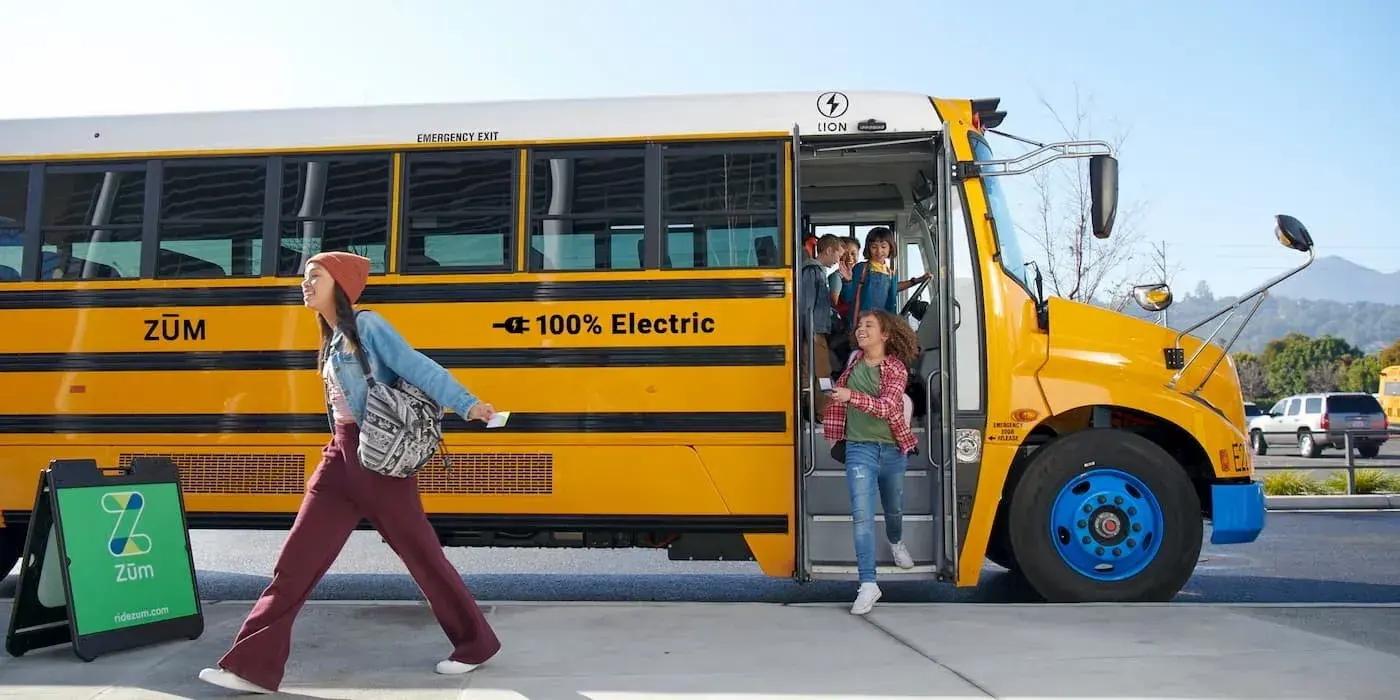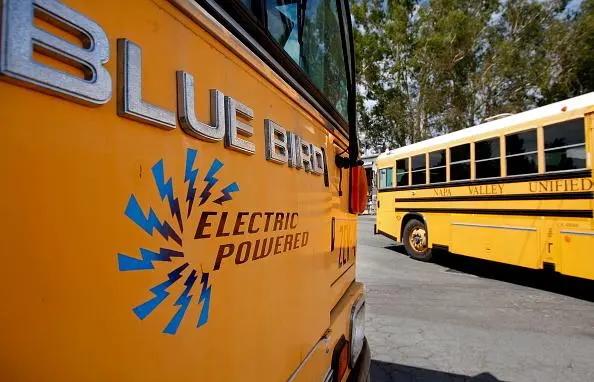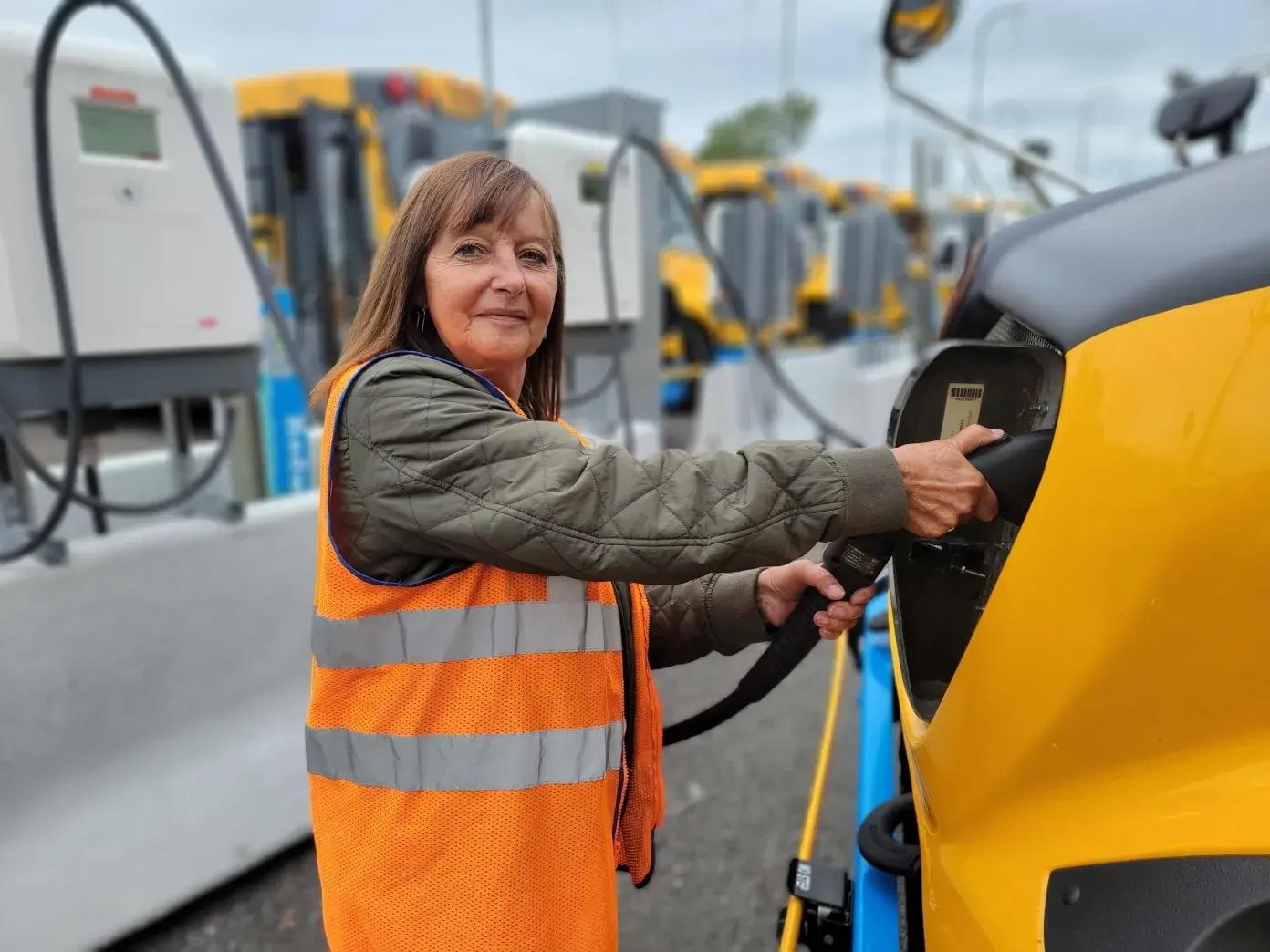Do your kids have a clean ride to school? Here’s how to get one — on an electric school bus.
As 12,000 kids in Athens, Georgia, returned to school recently, a lucky few rode in on two shiny new electric school buses the district bought this year.

Public school parent Ramsey Nix was one of the people who helped make the clean rides possible. Nix, an adjunct journalism professor at the University of Georgia, started advocating for clean buses after riding to work one day on one of the university’s electric buses. “I thought, ‘Why are college kids able to ride on these cool buses when our kiddos are stuck on nasty diesel ones?’”
Electric school buses have been shown to benefit kids’ health and learning, reduce pollution and even save schools money. But the Trump administration has been cutting crucial federal funding that helped Nix’s school, and more than 1,000 others, offer their students a pollution-free ride to school.
“A lot of people who really want electric school buses in their communities are left asking the same question,” says Kindra Weid, who coordinates electric school bus outreach for the nonprofit Moms Clean Air Force, an affiliate of Environmental Defense Fund. “Can we still make electric school buses happen?”
Despite the Trump administration’s efforts to defund clean transportation, there are still opportunities for dedicated parents and school leaders to get the buses they want by combining grants and other incentives from states, utilities and other sources. “There’s a cornucopia of funding options,” says Carolina Chacon, who manages the Alliance for Electric School Buses, an advocacy group. “Local communities can figure out which ones make the most sense for them.”
The benefits of electric school buses
It’s easy to understand why so many cities and towns want to replace the country’s roughly 500,000 diesel school buses with electric ones. Diesel exhaust contains cancer-causing and asthma-inducing pollutants. That toxic exhaust gets inside school buses, where children and drivers breathe it.
Diesel bus pollution has been linked to worse test scores in both English and math. The exhaust also endangers the health of people in the neighborhoods buses drive through. A 2024 study found that replacing a single diesel school bus with an electric one could result in almost $250,000 in health and climate benefits.

The good news doesn’t stop there. A recent EDF analysis found that electric buses produce less than a third of the climate pollution that diesel buses do. As the electricity supply gets cleaner, those numbers will drop further.
In some places, the total cost of owning and operating electric buses is lower than for diesel buses. And maybe the first thing drivers and riders notice — electric buses are quieter, too.
Firsthand reports from schools where electric buses are already in service tell of happier, less rambunctious kids who arrive in class ready to learn. “We have teachers who say, ‘I can tell which kids came in on the electric school bus first period,’” says Kevin Matthews, head of electrification at First Student, North America’s largest school bus operator.
That’s not all: Anecdotal evidence suggests drivers who drive electric school buses are more likely to stay on the job. (Nationwide, there’s a significant driver shortage.)
And perhaps because electric buses are quieter and vibrate less, special-needs students seem to gain additional benefits. Matthews tells the story of one student who, after arriving to school on a diesel bus, was so disruptive “that child could not go into the classroom.”
Instead, the student needed to be educated in the school’s office. As part of a pilot program, the student started coming to school on an electric bus. “After three days, they could put the child into the classroom and the child performed well,” Matthews says. “When the pilot ended, three days later, that student was back in the office.”
Trump administration strips federal funding
Despite the clear advantages to families and schools, the Trump administration is eliminating federal funding for electric school buses. The budget law passed this summer will, as of September 30, strip away federal tax credits that have helped schools acquire electric buses.
Already, hundreds of school districts seeking federal clean school bus grants have been in limbo since May, when the Environmental Protection Agency was supposed to announce the recipients of $965 million in clean school bus funds already allocated by Congress. To date, the agency’s program has funded more than 5,700 clean buses in approximately 1,200 districts over three years.
But given the delay in announcing this year’s grantees, nobody outside the administration knows what will happen with the last two rounds of funding, and whether they will be tied up in court. Also yet to be determined is what will become of electric school bus rebates paid for by the federal Diesel Emissions Reduction Act and other federal programs designed to cut pollution from buses and trucks.
There are reports of funding delays for these rebates, with federal officials offering no explanation. Advocates are fighting for the unlawfully withheld funds.
“We will continue to push for that funding to be released as it legally has to be,” Chacon says.
Environmental news that matters, straight to your inbox
Parents and advocates help schools move forward with electric bus programs
After deciding she wanted to bring electric school buses to Athens, Nix reached out to friends and activists, interviewed officials at school districts already using electric buses, and helped put together a document that addressed all the questions school board and community members raised. “I had coffee with every single school board member,” she recalls. She became friends with the district’s transportation director.

A common question Nix encounters is about cost. Electric buses can save schools big money on fuel and maintenance and even cost less to own and operate over their 12- to 15-year lifespans. But the upfront price can be two to three times that of a diesel bus. The EPA’s Clean School Bus Program and other federal funding made it easier to defray those costs, especially for districts with a high proportion of low-wealth families. Without that funding, the picture is more complicated. But Chacon cautions against giving up. For districts where school leaders are determined to get clean buses, "there are still a lot of options,” she says, especially if schools bundle funding and financing options, from states, utilities and even banks.
New York, for instance, just announced $200 million more in funding for electric school buses. Indiana offers grants paid for by the 2016 settlement Volkswagen entered into for cheating on emissions tests. Utah provides support for charging infrastructure. Many other states have followed suit based on the demand demonstrated by school districts for the EPA Clean School Bus Program.
Kevin Matthews Head of Electrification at First StudentWe have teachers who say, ‘I can tell which kids came in on the electric school bus first period.’
The Clearinghouse of Electric School Bus Funding and Financing Opportunities, compiled by the World Resources Institute’s Electric School Bus Initiative, lists more than 20 states offering grants, rebates, loans and other incentives.
Some utilities offer generous grants for both buses and charging infrastructure, such as the Beneficial Electrification Rebate Program offered by the Illinois utility ComEd. State and regional green banks offer loans to schools for electric buses, as do commercial banks and credit unions. And school districts across the country, including in Austin, Texas, and Tempe, Arizona, have issued bonds to help finance electric buses and charging infrastructure over the last several years.
Companies that administer transportation for districts, like First Student and Highland, often work with districts to apply for incentives and other funding options. “Our goal is to electrify as quickly as we can,” says First Student’s Matthews.

Buses can also sometimes generate their own revenue streams that help cover costs by feeding power back into the grid — especially in the summer when demand for electricity is high.
“School buses are almost perfectly designed for this because they’re essentially big batteries on wheels and many of them aren’t used much in the summer,” says Weid. “You can charge them at night when electric demand is lower and sell the power back in the afternoon and evening when utilities need it most.”
Often, school districts or transportation companies stack up a collection of grants, rebates and incentives to make the numbers work.
“The real excitement is when the buses show up,” says Matthews, whose company gives kids who ride new electric buses on their first day a special certificate signed by their school superintendent. “It’s really a thing to see.”
Nix has set her sights on more electric buses, no matter what is happening in Washington D.C. “It’s just a better experience when you’re on an electric bus,” she says.


